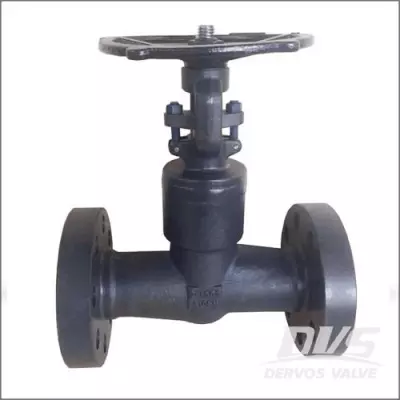Advantages and disadvantages of forged steel flanged gate valves - section one
The type of gate valves can be divided into wedge type gate valves and line type gate valves according to the sealing surface configuration, and wedge type gate valves can be divided into single gate type, double gate type and elastic gate type. The parallel gate valves can be divided into single gate valves and double gate valves according to the screw position of the stem.
When the gate valve is closed, the sealing surface can be sealed only by medium pressure, that is, the sealing surface of the gate plate is pressed to the valve seat on the other side by medium pressure to ensure sealing performance of the sealing surface, which is self-sealing. Most of the gate valves are sealed by external force, that is, when the valve is closed, it relies on external force to force the gate to the seat to ensure the sealing performance of the sealing cover.
The gate of a gate valve moves in a straight line with the stem. Usually with trapezoidal threads on the lifting rod, the rotary motion is changed into a straight motion through the nut on the top of the valve and the guide groove on the valve body, that is, the operating torque is changed into the operating thrust.
When the valve is opened and the height of the gate is 1:1 times the size of the valve, the flow channel is fully open, but this position cannot be monitored during operation. In practical use, the valve stem is marked by the vertex, that is, the open position, as its full open position. In order to consider the temperature change in the lock phenomenon, usually open to the vertex position and then rewind 1/2-1 turn, as the valve's full open position. Therefore, the full open position of the valve is determined by the position of the gate (i.e., travel).
For some gate valves, stem nuts are located on the gate plate. The hand wheel turns to drive the stem to move and the gate plate is lifted. This type of gate valves is called a rotary stem gate valve or dark stem gate valve.
Advantages:
I. The fluid resistance is low, and the sealing surface is subjected to the medium attack and erosion.
II. It takes less effort to open and close.
III. The flow direction of the medium is free from restriction, disturbance and pressure reduction.
IV. Simple shape, short structural length, good manufacturing technology and wide application range.
Disadvantages:
I. It is easy to cause erosion and abrasion between the sealing surface and it is more difficult for maintenance.
II. Large size, some space needed for valve's opening, long open and close time.
III. The structure of the gate valve is more complex.
As far as brake width, the gate valves can be divided into wedge type gate valves and line type gate valves according to the sealing surface configuration. Parallel gate valves can be divided into single and double gate types. According to the screw position of the stem, it can be divided into two types: open and dark.
